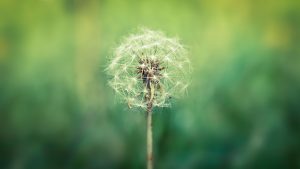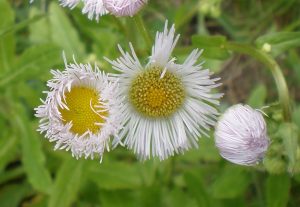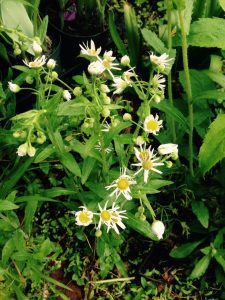 Weeds. Many avid gardeners battle them all season long, while most of us mow them over, spray them with pesticides, or simply ignore them. The truth is that these plants have offered humans health and well-being for thousands of years. More recently they provide the origins for some of our most beloved ornamental cultivars that we purchase and plant in our well-tended gardens.
Weeds. Many avid gardeners battle them all season long, while most of us mow them over, spray them with pesticides, or simply ignore them. The truth is that these plants have offered humans health and well-being for thousands of years. More recently they provide the origins for some of our most beloved ornamental cultivars that we purchase and plant in our well-tended gardens.
Serendipitous plants, or “weeds”, are plants that we have been told are pests, yet they offer many gifts to us that we may not be aware of. This blog series aims to bring readers closer to Nature by reintroducing you to the plants that show up in your yard without your conscious influence and to foster a paradigm shift of attitude toward them.
Erigeron (er-IJ-er-on) philadelphicus (fil-uh-DEL-fee-kus), Fleabane Daisy
Installment 1, May 7, 2016
 Erigeron philadelphicus, the Philadelphia fleabane, is a widespread North American plant in the Aster Family (Asteraceae – ass-ter-AY-see-ee) Also known as common fleabane, daisy fleabane, frost-root, marsh fleabane, poor robin’s plantain, skervish, and in the British Isles as robin’s-plantain. It is native to North America and found there in nearly all of the United States and Canada. It is also introduced into Europe and Asia, considered an invasive weed in many places.
Erigeron philadelphicus, the Philadelphia fleabane, is a widespread North American plant in the Aster Family (Asteraceae – ass-ter-AY-see-ee) Also known as common fleabane, daisy fleabane, frost-root, marsh fleabane, poor robin’s plantain, skervish, and in the British Isles as robin’s-plantain. It is native to North America and found there in nearly all of the United States and Canada. It is also introduced into Europe and Asia, considered an invasive weed in many places.
 The genus name, from Greek eri (early) and geron (old man), presumably refers to the fact that the plant flowers early and has a hoary down suggesting an old man’s beard. Robins Plaintain (E. pulchellus) is slightly shorter and has fewer, but larger, lilac or violet flower heads, as well as stem leaves that are sparse and stalkless but do not clasp the stem; it is insect-pollinated and also spreads actively by runners.
The genus name, from Greek eri (early) and geron (old man), presumably refers to the fact that the plant flowers early and has a hoary down suggesting an old man’s beard. Robins Plaintain (E. pulchellus) is slightly shorter and has fewer, but larger, lilac or violet flower heads, as well as stem leaves that are sparse and stalkless but do not clasp the stem; it is insect-pollinated and also spreads actively by runners.
This herbaceous plant is a biennial or short-lived perennial and is attractive to many insects including several types of beneficial native bees and butterflies. Consequently, it also attracts birds who prey on those insects, creating a healthy habitat.
Philadelphia Fleabane prefers full to partial sun, moist conditions, and soil containing fertile loam, although soil containing some clay or gravel is readily tolerated. This plant will adapt to drier locations, but its size will be reduced. Like similar fleabanes (Erigeron spp.) that are somewhat weedy, it may spread to undesirable locations by reseeding itself.
This information was gleaned from livingafield.com:
“The following text is meant for informational purposes only. It is not meant to diagnose or treat any illness or injury. Always consult with a physician or other qualified medical care provider
“Medicinal Uses:
Fleabane can be used as a natural insecticide. It is important to note however that this plant contains high levels of the natural pesticide pyrethrum, which has been known to cause skin sensitivity in some people. The plant has been mixed with other herbs and used to also treat headaches and inflammation of the nose and throat. The tea was used to break fevers. The plant was boiled and mixed with tallow to make a balm that could be spread upon sores on the skin. It was used for as an eye medicine to treat “dimness of sight.” It was used as an astringent, a diuretic, and as an aid for kidneys or the gout. The Cherokee and Houma tribes boiled the roots to make a drink for “menstruation troubles” and to induce miscarriages (to treat “suppressed menstruation”). It was also used to treat hemorrhages and for spitting of blood. The Catawba used a drink from the plant to treat heart trouble.”
This information is from “Wild Edible and Medicinal Plants”
“A tea made from the plant is astringent, diaphoretic, diuretic and emmenagogue. It is used in the treatment of chronic diarrhoea, gout, gravel, epilepsy and menstrual problems. A poultice of the plant is used to treat headaches and is also applied to sores. It should not be taken by pregnant women since it can induce a miscarriage. A snuff made from the powdered florets is used to make a person with catarrh sneeze.”

Fleabane is one of my favorite “weeds!” I’m not really sure why it should even be called a weed. It’s so pretty. If only we could get “real” plants to grow like it does. It’s “fresh as a daisy” and has an interesting touch of pink. It pops up all around but I wouldn’t call it invasive. It’s easy to pull if you don’t want it but I seldom do that. And I mow around it, letting it be happy and alive. I tried to get a blue variety to grow (how sweet would that be!) but it didn’t take. I didn’t realize it was a native. That’s great. Thank you for drawing attention to it. It deserves it!
Hello Becky. Thank you for your reply and your enthusiasm. I find Fleabane to be very well behaved, as you do, and definitely adds a delicate touch of color to the garden. Have you ever tried transplanting it?
By the way, I’ve edited the blog post to include some medicinal uses of Fleabane. As with any plant, always use caution as everyone reacts differently to medicinal plants.
Hi Donna, Nice to hear from you! I don’t think I’ve ever transplanted it but I would think it would do fine. It does seem to pick the places it likes, but what “weed” doesn’t? Another of of my favorite is the violet. Right now I have areas of white ones, earlier it was purple. And who can fault a buttercup? The only one I’m not so sure about is garlic mustard. I let it grow some places until it looks weedy, then I pull it. But, all in all, I really enjoy the “weeds.” I’ll check out it’s medicinal uses. Happy gardening! Becky